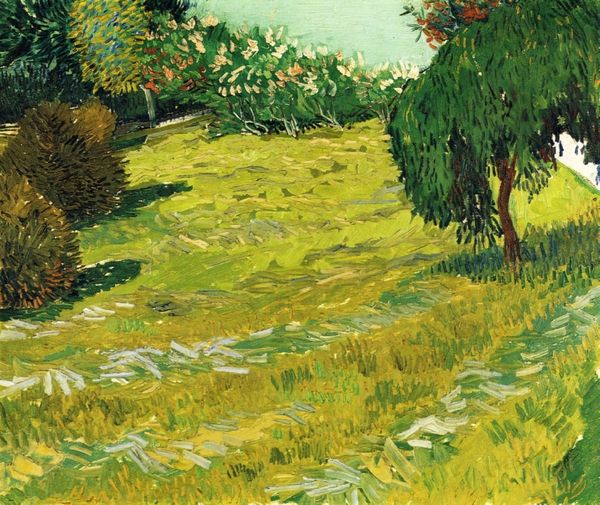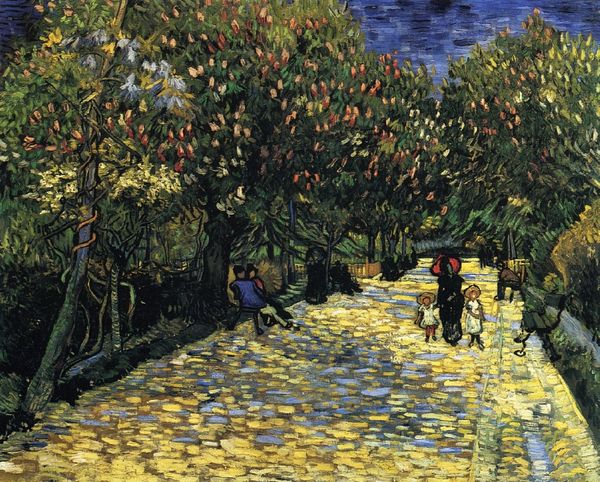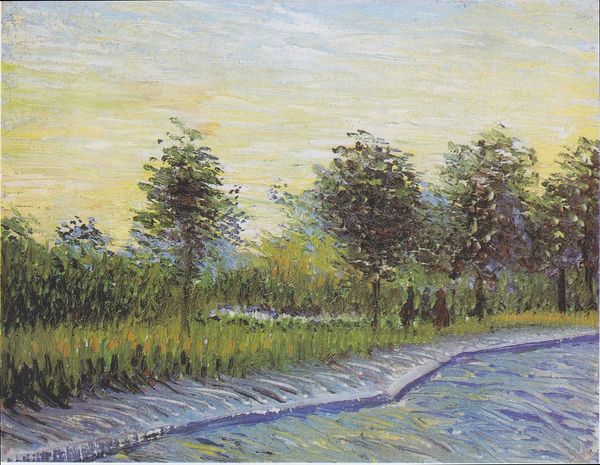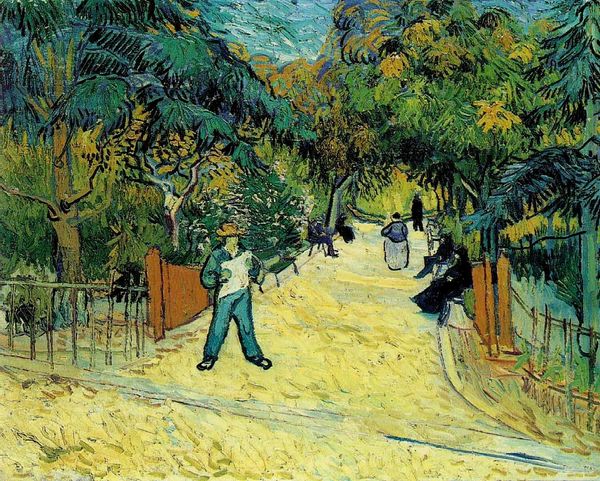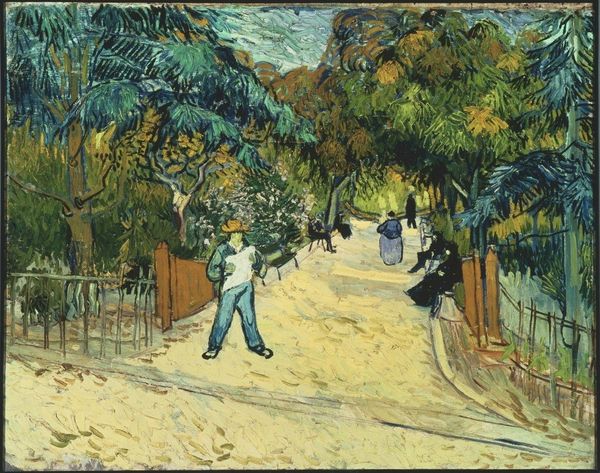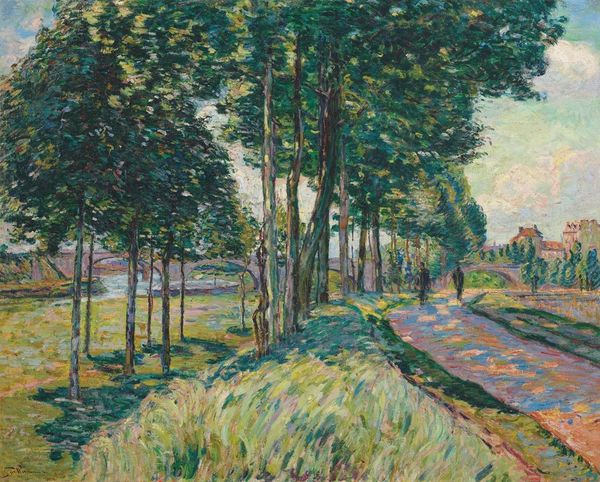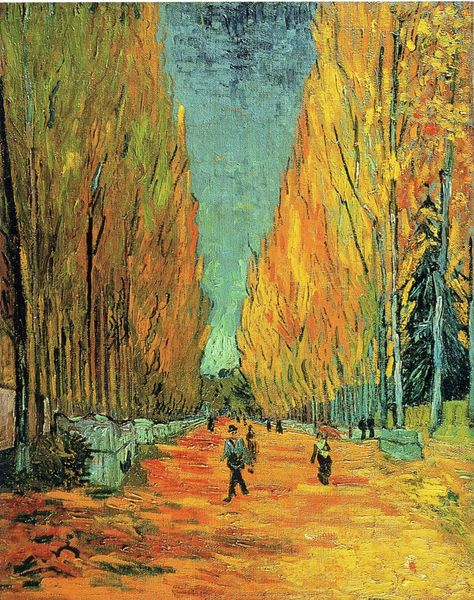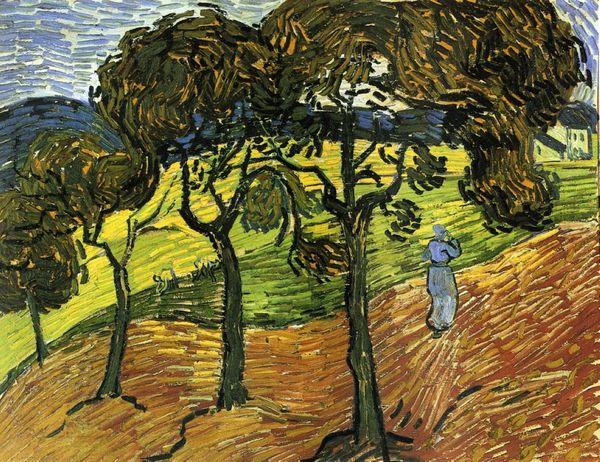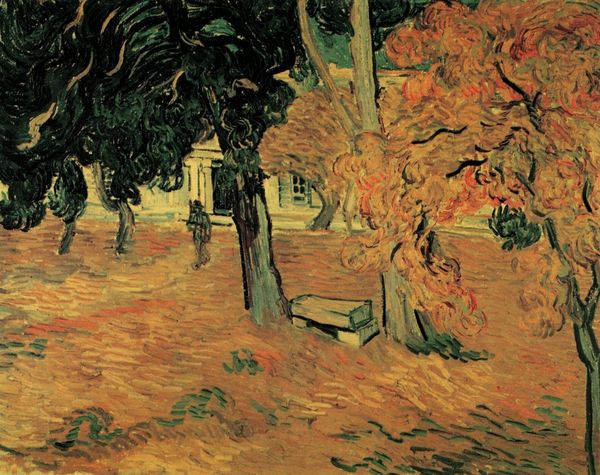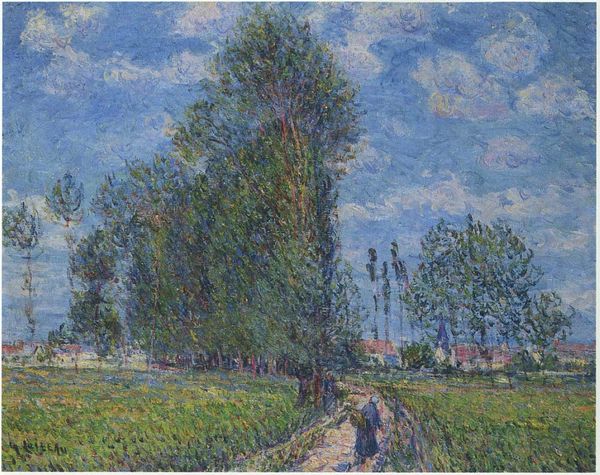
Public Garden with Couple and Blue Fir Tree (The Poet s Garden III) 1888
0:00
0:00
vincentvangogh
Private Collection
painting, plein-air, oil-paint
#
tree
#
garden
#
painting
#
impressionism
#
grass
#
plein-air
#
oil-paint
#
landscape
#
figuration
#
nature
#
road
#
plant
#
naive art
#
park
#
post-impressionism
#
natural environment
Dimensions: 73 x 92 cm
Copyright: Public domain
Editor: We’re looking at Vincent van Gogh’s "Public Garden with Couple and Blue Fir Tree (The Poet's Garden III)," painted in 1888. The composition feels a little odd; the figures seem small compared to the massive tree dominating the scene. What do you see in this piece from a historical perspective? Curator: This painting, created during Van Gogh's time in Arles, reveals a deliberate engagement with the public sphere. The 'Poet's Garden' itself became a stage for Van Gogh, Gauguin and, briefly, Bernard, to enact their artistic manifesto, attempting to depict 'nature' through a new, symbolic, artistic vision. Notice how the "public garden" is deliberately framed: it isn’t a truly naturalistic scene, but an constructed image with cultural aspirations. Editor: Constructed how? I see a garden and a couple strolling, but what makes it "constructed?" Curator: Think about the colours. Are they what you would expect? Or the heavy brushstrokes that don't seek to naturally represent nature? In focusing so heavily on the fir tree, could he also be inviting us to reflect on our own roles as spectators within these curated public spaces? And consider this; Van Gogh sold very few paintings during his lifetime. Who did he imagine was looking at this work? Editor: So the painting becomes an interesting commentary on art’s role in society, beyond just a nice picture. Is that it? Curator: Exactly. It points to the aspirations Van Gogh had for a future audience that understood his work and how that affected his practice. We're seeing a reflection of societal values through art, how art can shape our understanding of both nature and human experience. Editor: I see it differently now; it makes me think about how much art is made for people who might not even be around to see it! Thanks. Curator: And it allows us to reflect on what *we* bring as viewers into this public sphere that extends across time and contexts.
Comments
No comments
Be the first to comment and join the conversation on the ultimate creative platform.
